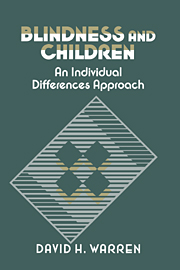Book contents
- Frontmatter
- Contents
- Preface
- Introduction
- Part I Interaction with the physical world
- Part II The acquisition of cognitive skills
- Part III Adapting to the social world
- 8 Social–emotional and communicative development in infancy
- 9 Language as a social skill
- 10 Social development and adjustment
- 11 Developing a sense of self
- Part IV Summary
- Conclusion
- References
- Author index
- Subject index
8 - Social–emotional and communicative development in infancy
from Part III - Adapting to the social world
Published online by Cambridge University Press: 02 December 2009
- Frontmatter
- Contents
- Preface
- Introduction
- Part I Interaction with the physical world
- Part II The acquisition of cognitive skills
- Part III Adapting to the social world
- 8 Social–emotional and communicative development in infancy
- 9 Language as a social skill
- 10 Social development and adjustment
- 11 Developing a sense of self
- Part IV Summary
- Conclusion
- References
- Author index
- Subject index
Summary
At birth, the human infant shows no evidence of true social responsiveness. Physical states such as hunger and pain elicit crying or other signs of distress, and these indications are reduced or eliminated by food or removal of the aversive stimulus. It makes little difference who or what causes the change in stimulus; one breast or bottle is as good as another, as long as it contains the right stuff. The neonate is nondiscriminatory as to the identity of the agent. By the age of six months, however, the typical infant has begun to discriminate among persons and respond selectively to them emotionally and socially; and well before a year of age, the infant has a well-refined system of response to individual people, including aversions as well as attractions.
Attachment
The term attachment refers to the development in the first year of selective social–emotional responsiveness to individual people, with positive responses to a small number of people (typically including one or both parents) and negative responses to other people (the phenomenon called “stranger fear”). This progression is typically described as a narrowing of the objects of attachment that begins to be apparent around six months of age, together with the development of an aversion to other individuals. Indices of positive attachment include smiling and vocalizing, and indices of aversion include distress not only when the attachment objects are not present but also when “strangers” are present. The development of specific attachments shows not only discrimination among people, but also the beginnings of emotional responsiveness upon which subsequent emotional ties will be based.
- Type
- Chapter
- Information
- Blindness and ChildrenAn Individual Differences Approach, pp. 206 - 224Publisher: Cambridge University PressPrint publication year: 1994



